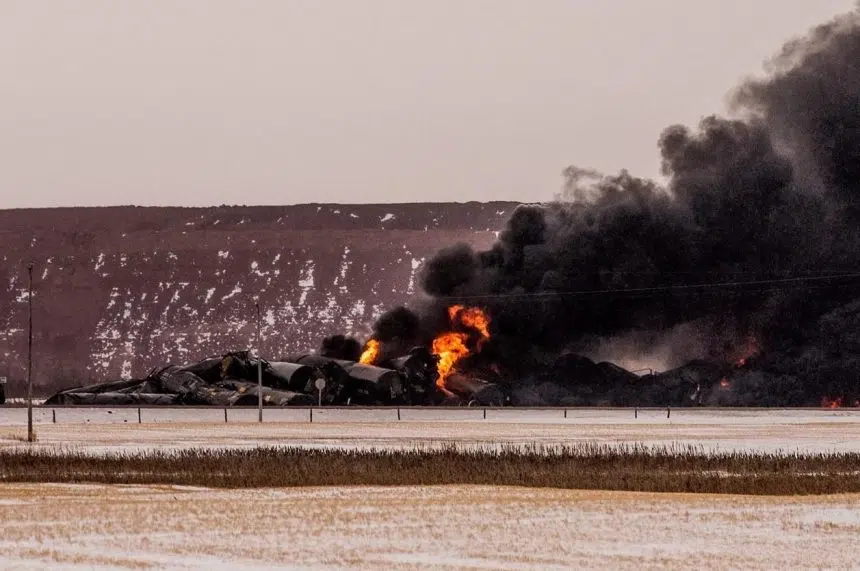GUERNSEY, Sask. — The Saskatchewan government says about 1.2 million litres of oil spilled during a fiery train derailment in a rural area last week.
The amount of oil recovered is still being determined, but a significant portion was burned off, the province’s Environment Ministry said in an email Tuesday.
The Canadian Pacific Railway freight train jumped the tracks near Guernsey, about 115 kilometres southeast of Saskatoon, early Thursday. Thirty-two of the train’s 104 cars derailed and a dozen caught fire.
Flames and thick black smoke poured from the crumpled train cars and prompted an evacuation of about 85 residents from the area for more than 24 hours.
Reeve Jack Gibney of the Rural Municipality of Usborne, which includes Guernsey, said there is concern in the agriculture community over the second major oil spill in two months.
Another derailment in December about 10 kilometres away on the same set of tracks also caused a fire when 1.5 million litres of oil spilled.
The rural municipality is to meet with CP officials Wednesday.
Remediation efforts were already underway at the site of the most recent derailment, the province said. The rail line was reopened on Friday.
CP has contracted environmental consultants and contractors to assess any environmental impacts. The province said the rail company is responsible for all costs associated with the derailment, emergency response and remediation.
Cleanup is expected to take several months.
The province said the spill was fully contained to railway and highway ditches, and the frozen ground helped reduce the risk of contaminants penetrating too far down.
Local officials have said there is concern over the safety of rail transport for oil and have suggested it’s time to look to pipelines. Trains, often carrying oil and other dangerous goods, move through the Saskatchewan hamlet every hour, Gibney said.
After last week’s derailment, the federal government ordered lower speed limits for all trains carrying large amounts of dangerous goods.
CP has also confirmed the tank cars involved were TC-117J types, which became the industry standard following the phaseout of the DOT-111 cars involved in the deadly rail disaster in Lac-Megantic, Que., in 2013. Forty-seven people were killed when tanker cars loaded with crude oil derailed and caused an explosion.
The TC-117 cars have additional safety features including thicker steel and thermal protection.
A retrofitted version of the TC-117 tank type was involved in crashes and subsequent oil leaks in the December derailment in Saskatchewan, as well as in other recent accidents in St. Lazare, Man., Iowa and Texas. It has a thinner shell than newer models.
Kelly Geraldine Malone, The Canadian Press







